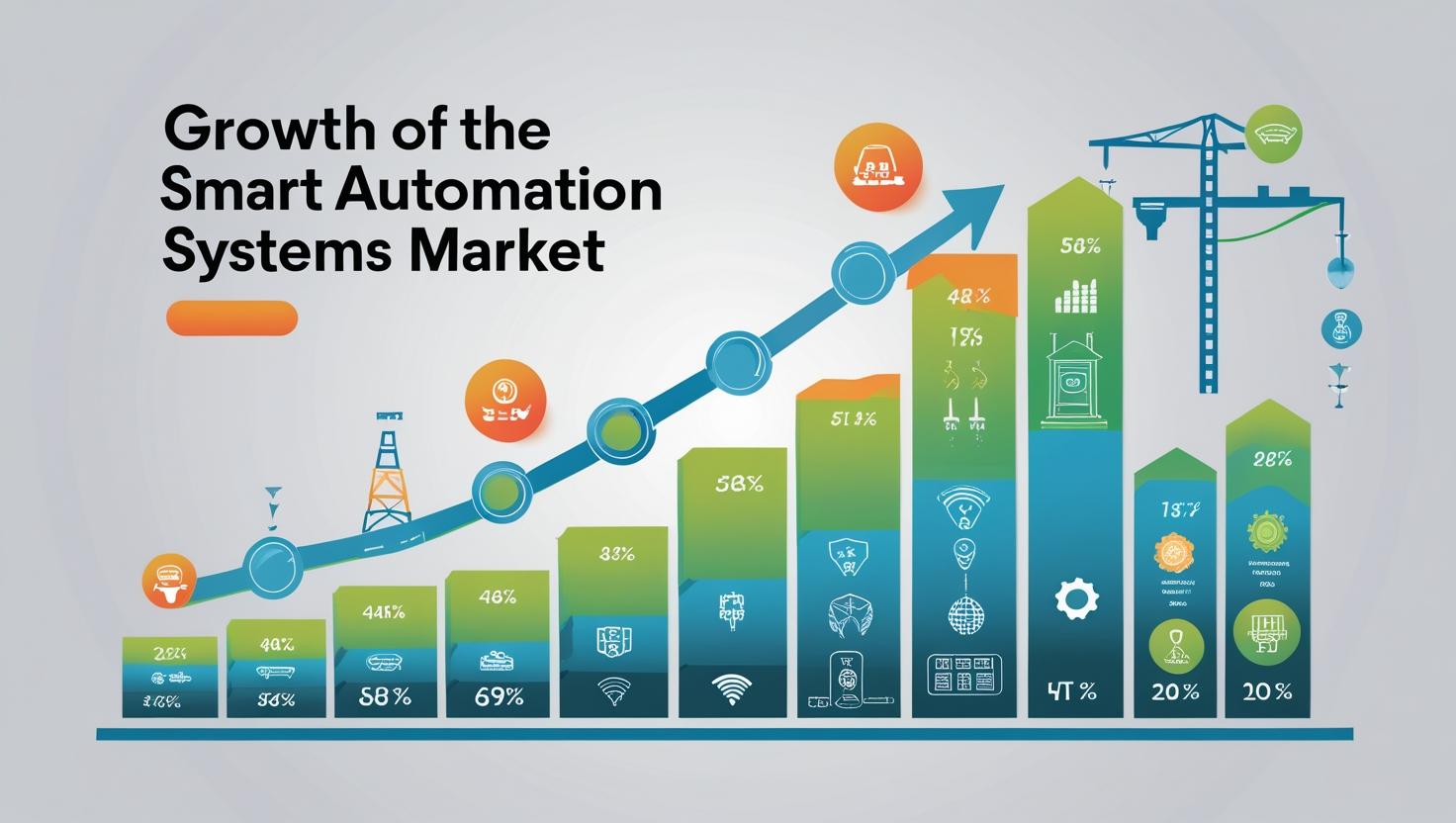The Smart Automation Systems market is at the forefront of a global industrial revolution, driven by the convergence of advanced technologies such as artificial intelligence (AI), the Industrial Internet of Things (IIoT), and real-time data analytics. As industries move beyond traditional automation to embrace fully connected, intelligent, and self-optimizing systems, smart automation is transforming the way businesses operate—from manufacturing and logistics to healthcare and energy. In the era of Industry 4.0, these systems are no longer optional but essential for achieving operational efficiency, agility, and long-term competitiveness. With demand surging across sectors and geographies, the smart automation market is poised for explosive growth in the years ahead.
The world is undergoing a seismic shift in how industries operate, produce, and compete. At the heart of this transformation is the rise of Smart Automation Systems, a core enabler of Industry 4.0. These intelligent systems—powered by artificial intelligence (AI), machine learning, IoT, and edge computing—are rapidly moving beyond traditional automation to usher in a new era of interconnected, self-optimizing industrial environments. As a result, the Smart Automation Systems market is not only growing—it’s accelerating toward unprecedented scale and impact.
Defining Smart Automation in a Connected World
Smart automation systems differ significantly from their conventional predecessors. Where traditional automation focuses on performing repetitive tasks with predefined instructions, smart automation leverages real-time data, adaptive decision-making, and predictive analytics to dynamically respond to changing inputs. These systems integrate seamlessly across hardware, software, and cloud infrastructures—enabling autonomous operations that are both intelligent and scalable.
In manufacturing, for example, smart automation can automatically adjust production lines based on demand fluctuations. In logistics, it can reroute deliveries in real-time to avoid traffic or supply chain bottlenecks. Across every use case, the goal is the same: enhance efficiency, accuracy, and resilience.
Download PDF Brochure @ https://www.marketsandmarkets.com/pdfdownloadNew.asp?id=150375126

Fueling Market Expansion: Key Drivers Behind the Growth
The explosive growth of the Smart Automation Systems market is being fueled by several converging forces. First, the widespread adoption of Industry 4.0 principles—such as cyber-physical systems, big data analytics, and smart factory infrastructure—is creating unprecedented demand for systems that can operate autonomously and intelligently.
Second, labor shortages and rising operational costs are prompting organizations to turn to automation not just for efficiency but also for survival. Smart automation allows companies to reduce dependency on manual processes, especially in sectors like manufacturing, logistics, healthcare, and energy.
Third, the proliferation of Internet of Things (IoT) devices and 5G connectivity is expanding the potential for real-time automation. Machines, sensors, and systems are now able to communicate instantly and continuously, creating digital ecosystems where processes can self-optimize based on incoming data.
Cross-Industry Adoption: A Technology for Every Sector
What sets smart automation apart is its cross-industry adaptability. In manufacturing, it drives predictive maintenance, adaptive scheduling, and robotic quality control. In healthcare, smart systems streamline diagnostic processes, automate lab workflows, and enhance patient monitoring. In utilities and energy, automation optimizes grid performance and predicts equipment failures before they occur.
Retailers are using smart automation to manage inventory in real-time, while financial institutions are automating fraud detection and regulatory compliance. This horizontal scalability is a key reason why the market is witnessing such explosive growth.
Challenges on the Road to Widespread Implementation
Despite its promise, the adoption of smart automation systems is not without challenges. Integration with legacy infrastructure remains a significant hurdle, especially for older industrial plants. Additionally, cybersecurity becomes a pressing concern as more systems go online and begin communicating autonomously.
Workforce readiness is another issue. As automation becomes more intelligent, companies must invest in upskilling and reskilling their human workers to ensure they can work effectively alongside new technologies. Without proper change management, even the smartest automation systems can underperform.
Regulatory uncertainty and data privacy considerations are also important factors, especially in regions with strict compliance laws.
The Future of Smart Automation: Autonomous, Predictive, and Resilient
Looking ahead, the future of smart automation lies in greater autonomy, contextual intelligence, and seamless interoperability. Future systems will be capable of self-learning, self-healing, and even collaborating with other intelligent agents across organizational and geographical boundaries.
Technologies such as digital twins, AI-driven orchestration, and blockchain for secure, transparent operations are already beginning to converge with smart automation. This will further enable systems that are not only reactive but truly proactive in managing complex workflows and environments.
Conclusion: A Defining Moment for Global Industry
The Smart Automation Systems industry is more than a technological trend—it’s a cornerstone of the fourth industrial revolution. As businesses across the globe adapt to an increasingly competitive and unpredictable environment, smart automation offers a clear path forward: one that balances efficiency with intelligence, scalability with flexibility, and cost control with innovation.
Those who embrace these systems early will not only enhance operational performance—they will redefine what’s possible in the digital age.
Frequently Asked Questions (FAQ) – Smart Automation Systems Market
1. What are Smart Automation Systems?
Smart automation systems refer to advanced technologies that combine traditional automation with intelligence powered by AI, machine learning, and real-time data analytics. Unlike basic automation, these systems can adapt to changing environments, make decisions, and optimize processes without human intervention.
2. How are Smart Automation Systems different from traditional automation?
Traditional automation systems follow predefined rules and require manual programming for changes. In contrast, smart automation systems can learn, adapt, and optimize workflows using real-time data, enabling dynamic responses to variable inputs and operational conditions.
3. What is driving the growth of the Smart Automation Systems market?
Key growth drivers include the global push toward Industry 4.0, rising labor costs, supply chain disruptions, increasing demand for efficiency, and the proliferation of IoT and AI technologies. Additionally, companies are seeking to become more resilient and adaptive in the face of global uncertainty.
